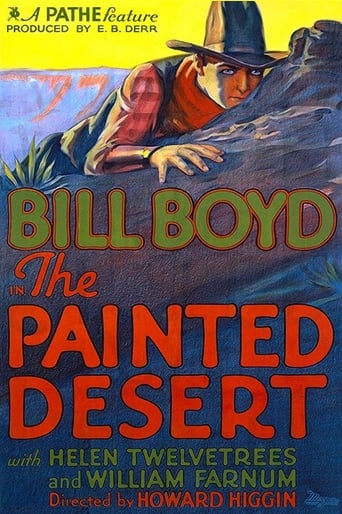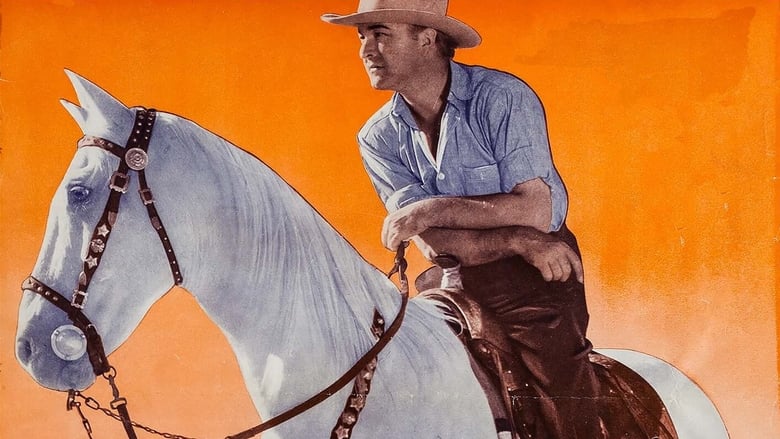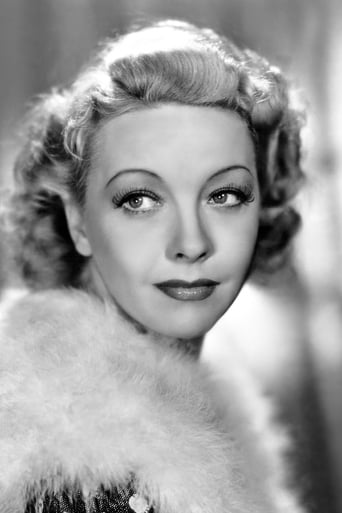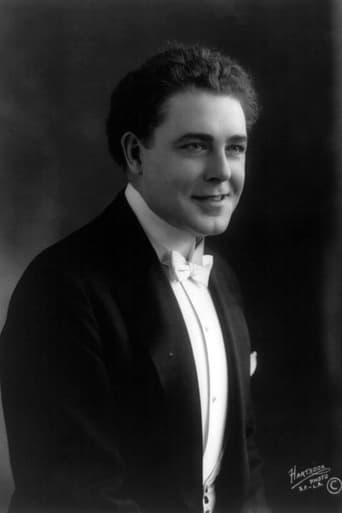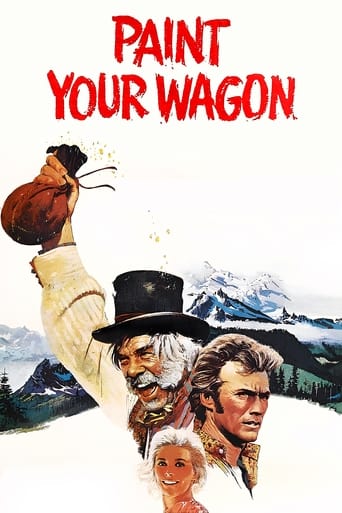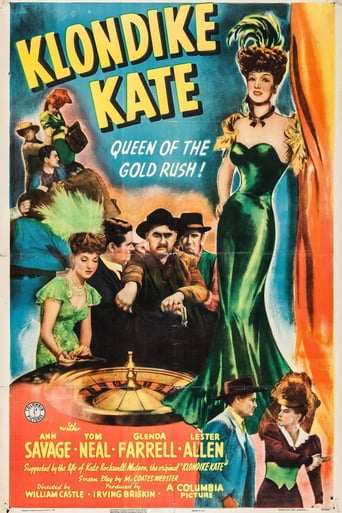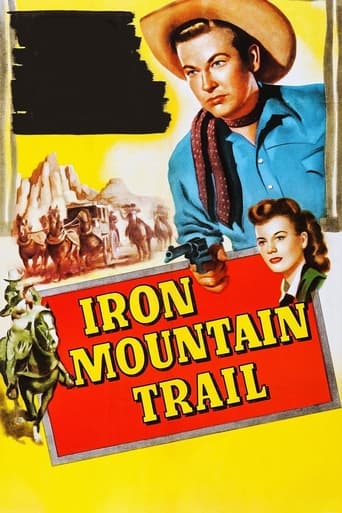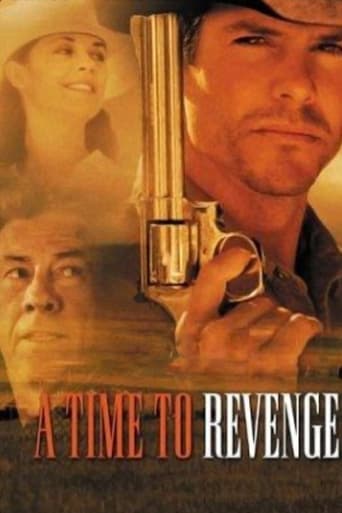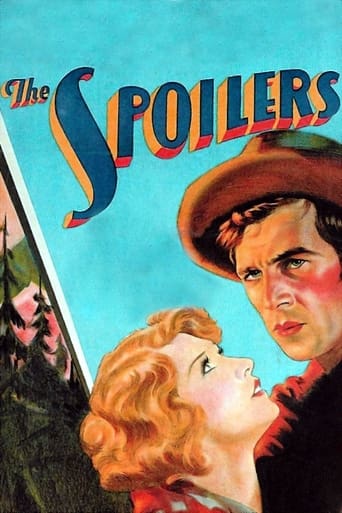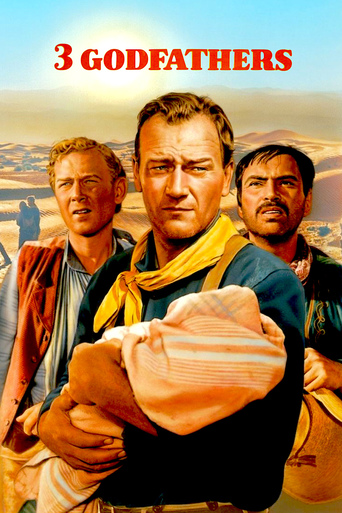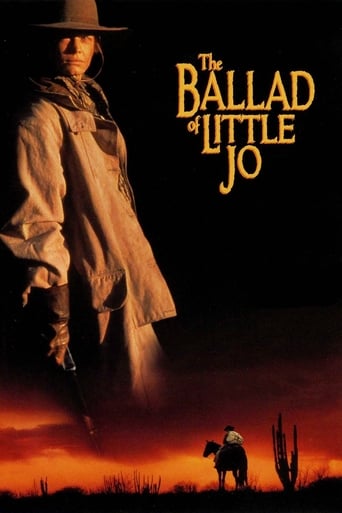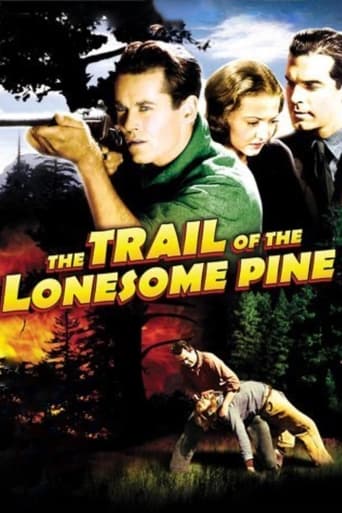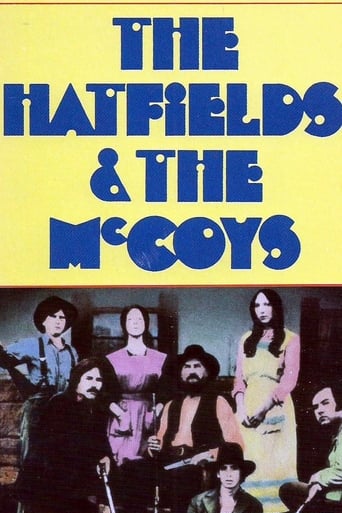The Painted Desert (1931)
Western pardners Jeff and Cash find a baby boy in an otherwise deserted emigrants' camp, and clash over which is to be "father." They are still bitterly feuding years later when they own adjacent ranches. Bill, the foundling whom Cash has raised to young manhood, wants to end the feud and extends an olive branch toward Jeff, who now has a lovely daughter. But during a mining venture, the bitterness escalates. Is Bill to be set against his own adoptive father?
Watch Trailer
Cast
Similar titles
Reviews
Best movie of this year hands down!
Pretty good movie overall. First half was nothing special but it got better as it went along.
Let me be very fair here, this is not the best movie in my opinion. But, this movie is fun, it has purpose and is very enjoyable to watch.
The movie turns out to be a little better than the average. Starting from a romantic formula often seen in the cinema, it ends in the most predictable (and somewhat bland) way.
Clark Gable in his first big role. He gets low billing but has plenty of screen time to make it appear as if he's one of the stars. Very interesting to see him as a villain in this early Western talkie. It's bigger than a B-western but not quite as fully formed as a feature film; it's somewhere in the middle. Beautiful Arizona locations but terrible production and poor acting aside from Gable and the leading lady, playing opposite western star William Boyd. This really isn't anything especially noteworthy except for Gable's appearance but I'm still glad I got to see it.5.7 / 10 stars--Zoooma, a Kat Pirate Screener
THE PAINTED DESERT (Pathe, 1931), directed by Howard Higgin, stars William Boyd, billed simply as Bill Boyd, in a slightly atypical western story set in the landmark territory of Arizona. For Boyd's first western which has nothing to do with sand painting, it was his introduction to a genre for which he become famous. Before achieving fame and popularity as "Hopalong Cassidy" on both screen (1935-1948) and later TV series (1952-54), Boyd was a blond-haired actor assuming all sorts of character parts since the silent era of the 1920s. For THE PAINTED DESERT, Boyd was the center of attention, supported by notable veteran silent screen actors as J. Farrell MacDonald and William Farnum, along with Helen Twelvetrees, the only female credited in the cast. In later years, however, it's earned the reputation as being the early screen appearance of future major star, Clark Gable, who's strong presence and distinctive voice helped rise above the level of being just another mediocre outdoors western.The ten minute prologue begins with an written diary passage which reads, "Feb. 25 ... Four months since we headed west into the Painted Desert, about sundown today, we come to a deserted camp." Jeff Cameron (J. Farrell MacDonald) and "Cash" Holbrook (William Farnum), are introduced as two prospecting pals who encounter an abandoned covered wagon. Inside they find a baby boy, the sole survivor of a possible massacre. Jeff asks, "Give me a hand with the boy." Cash replies, "You know I will." While the infant initially brings the two men closer together in roles as father figures, he also splits them apart when one claims custody of the boy. With Jeff wanting to name the infant, "Daniel Boone Cameron," it's Cash who takes "Buffalo Bill Holbrook" as his own, thus starting a lifelong feud between two best friends. Next diary passage: "Well, looks like after all these years, me and "Cash" Holbrook was coming to a showdown. He's had all the luck, but he ain't never going to get this water hole." For the rest of the story, Cash, who has converted the land around the water hole into a cattle ranch, has raised Bill on his own son while Jeff, now a widower, has raised his daughter, Mary Ellen (Helen Twelvetrees). The Carters soon encounter a stranger, Rance Brett (Clark Gable), drinking water on their property. Brett, from Montana, heading for New Mexico way, having lost his horse, is stranded. Becoming attracted to the presence of Mary Ellen, Brett stays, becoming partners with Cameron. As for the adult Bill Holbrook (Bill Boyd), having been educated in mining school, finds himself ordered from home by his adopted dad for creating a cattle stampede that was, in Bill's point of view, to keep both Holbrook and Cameron from killing each other. As Bill vies for the attention of Mary Ellen from Brett, he assists Jeff with his Cameron Mine Company. Problems arise when vicious rumors about Jeff and Cash spread around town, causing Bill going through extremes to end this feud before it's too late.Slow pacing with lack of underscoring quite common in 1931 talkies, the proposed original screenplay by Howard Higgin and Tom Buckingham breaks away from traditional western form of staged Indian massacres, bank robberies, chase scenes on horseback or extended bar room brawls and dancing saloon gals in favor of "Romeo and Juliet" courtship prevented by family rivalry, in this instance, two fathers. Granted there's typical comedy relief thrown in for good measure, one acted by old geezer Charles Sellon as the gossiping Tonopah, and another briefly played by former Mack Sennett comedy player by the name of Al St. John as Buck. One great advantage THE PAINTED DESERT has is the fine use of black and white photography for its location scenery of the badlands and mountain view of the Painted Desert. Though the leading players occasionally act their roles in low-key manner, it's the up-and-coming Clark Gable who plays his part with natural conviction. Though Gable westerns were few and far between, it was that same genre that marked the end of his thirty year movie career with John Huston's THE MISFITS (United Artists, 1961). His presence with unshaven face, high hat, rolling of cigarettes and horseback riding are enough to draw attention whenever he's on, especially the confrontation sequence between he and Bill Boyd that would be clipped as part of the many Gable movies inserted into the 1968 documentary narrated by Burgess Meredith titled "Dear Mr. Gable" (ABC television network.Close to being forgotten, THE PAINTED DESERT earned its rediscovery during the wake of home video in the early 1980s with VHS cardboard boxes using either still photos of Clark Gable (giving the impression that he was the star) or of Gable and Boyd's face-to-face confrontation on the package. Some prints consist of its sold to television Movietime introduction logo in place of the original Pathe Studios presentation while all prints clock at 75 minutes as opposed to 80. THE PAINTED DESERT did have its share of television broadcasts in the late 80s either public or local broadcasting systems, usually during the after midnight hours, before commonly found on cable television's American Movie Classics (prior to 1999) and Turner Classic Movies, especially during some of its Clark Gable tributes.Contrary to sources indicating the 1938 release of PAINTED DESERT (RKO Radio) starring George O'Brien as being a remake. The title and setting may indicate the same, but story and character names are overall different, bears no connection whatsoever with the earlier but slightly better western package. Will William "Bill" Boyd make good as a movie cowboy? You know he will. (**)
The Painted Desert was one of the last features to be produced by Pathé in 1930 before being taken over by RKO, and one of the first to be released by the emerging RKO-Pathé Distributing Corporation. After its initial release it was put back on the shelf, supposedly never to be seen again. During this time four key action sequences were removed to be used as stock footage in later RKO films, among them the 1938 re-make also titled The Painted Desert. In 1955 the RKO library was sold to C&C Television Corporation for TV syndication, primarily on CBS affiliated stations, and both versions of The Painted Desert were in the package. 35MM source material for these 16mm television prints was missing all of the deleted footage, so that what remained, and all that viewers have been able to see for the last fifty years, was a lot of talk, and practically no action. The sequences which are missing are most of the cattle stampede at the beginning of the film, a wagon hi-jacking and subsequent stampede into the canyon mid-way into the film, an attempted, but unsuccessful wagon hi-jacking soon afterwards, and the big mine explosion and resultant landslide that destroys the mining camp further on. (Two very impressive shots from this last sequence can be found in Republic's Red River Valley (1936).) Frustratingly, the results of these events are shown, and much talked about, but the events themselves are nowhere to be seen. The version shown on Turner Classic Movies, though of superior visual quality, having been derived from the surviving original 35MM material, is still missing these key sequences, though no mention is made of it on the air.Even with what must have been some well executed and nicely photographed action sequences, The Painted Desert would still suffer from many of the same problems that make it so hard to take today, only less so. The direction by Howard Higgin is of the burdensome, slow moving style that typifies so many early sound films, best and most often described as "creaky." But William (billed as Bill) Boyd displays all the positive and natural characteristics that made him popular with audiences five years later as Hopalong Cassidy. We hear too often about the handful of silent players who did not make the transition into sound; Boyd was one of the greater number who did. As for Gable, in his first speaking role, it's all there. When he's on the screen, you know you've got something, and, as they say, the rest was history. Helen Twelvetrees was a competent actress who found her niche in big city melodramas, often as the victim of her environment, or the bad, bad people inhabiting it. She suffered a lot, but she suffered well. The only conceivable reason why she was so badly mis-cast in this film must have been that she was under contract to Pathé, and owed them a picture, or was being punished for not playing ball with the front office, or something like that. Charles Sellon as a tipsy miner is just plain tiresome. Farnum and MacDonald give just exactly what we've learned to expect from them, on target performances of the old school.Under ordinary circumstances, such a film would be of little value today, and probably rarely, if ever shown. But The Painted Desert is Clark Gable's first prominent role, and his first sound film, granting it a permanent place in film history, as well as an object of interest. Copyrighted by the soon-to-be-defunct Pathé Exchange in January 1931, this film fell into public domain when the copyright was not renewed in 1958, and during the ensuing years has become a staple of videotape distributors who specialize in titles over which there are no longer any legal restrictions, but which have some modicum of popular appeal. Promoting Clark Gable's presence, usually with latter day publicity photos in which he appears older, and hence, the film younger, a lot of usually inferior copies of the truncated version have found their way into a lot of videotape collections and/or thrift shops. It would be nice to think that the film might be restored to its original length by re-inserting the missing sequences, if and when they could be identified and found, but this is highly unlikely. If a complete, original print could be located somewhere, at least Turner Classic Movies could be alerted to upgrade their version; in the meantime, at least an awareness of what we've got, and what's missing, might make The Painted Desert a little more tolerable for Clark Gable completests if no one else.
Two long time friends find a baby boy left behind within an abandoned camp in old Arizona, and their conflict over who should take charge of the infant quickly lowers their relationship to the freezing point, where it remains for over 20 years although they are neighbouring ranchers, and the grown youth's attempt to bring about a reconciliation forms the heart of this interesting early western. William Boyd, later renowned as Hopalong Cassidy, is featured as the young man, Bill, raised by Cash Holbrook (William Farnum), with J. Farrell MacDonald as Jeff Cameron, the other of the feuding pair, and when Bill, a mining engineer, discovers a valuable lode of tungsten ore on Cameron's land, he forthwith fosters a mining project which he believes will be putting an end to the longstanding conflict. Actually filmed in Arizona's scenic Painted Desert region, the work is efficiently directed by Howard Higgin, who is abetted by the fine camerawork of Edward Snyder, with excellent sets arranged by Carroll Clark, and the cast generally performs well, a strong performance being given by Clark Gable as a completely unrepentant villain, only the tasteless characterization by Helen Twelvetrees as Cameron's daughter tainting the production.
